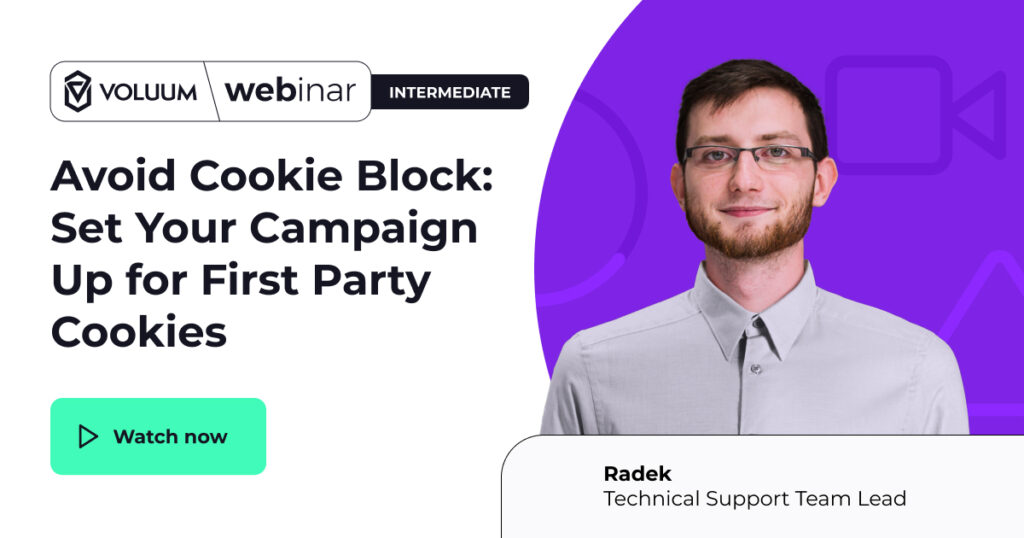Article updated on: 8.02.2024
Cookie-based tracking has recently become the industry’s punching bag, as if all the industry’s bad practices are tied to this one technology. Cookie based technology has its problems and it simply does not hold up to modern standards. The overarching trends are bigger than all of us. It’s better to adjust to them.
How do you adjust for the cookieless future? With cookieless tracking, of course. Or cookie-safe tracking.
Is it possible? Yes, with ease. If you are a Voluum user, you already can benefit from it.
Is it necessary at this moment? Yes, although Google has pushed the deadline again and now it is predicted that Google will stop blocking 3rd party cookies in the beginning of 2025. But it’s better to be ready in advance.
Should you be worried? Definitely no. You should read this article to learn more about how cookies are used in tracking, what cookieless tracking even is, what the lack of support for cookies will mean for the advertising industry and how Voluum is already prepared for the future. This is more productive than being worried.
Cookies are small text files left by a web browser to store personal data about a user session. They were used to save information such as web page language settings, text fields that were filled previously, login information or the contents of a shopping cart.
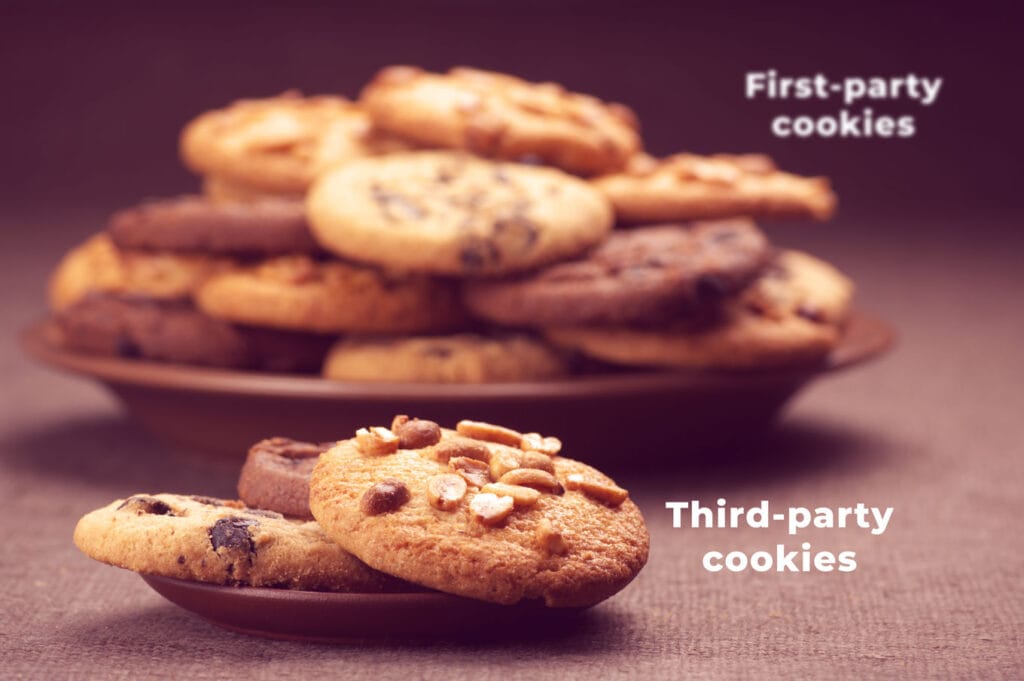
Cookies are usually used by the web page that you are currently on. Such cookies are commonly referred to as first party cookies. They record first party data, i.e. data left directly by a user.
First party cookies call to the same domain name that you are currently visiting. So if you are on the CNN.com site, first party cookies make requests (“call”) to the CNN.com domain.
The other type of cookies are third party cookies that call other domains. In our example, a third party cookie would call the anotherdomain.com domain while a user is visiting the CNN.com page.
Calling third party domains had become the root cause of all controversies with cookie technology. They record user level data such as clicks, time on site, device type or mouse gesture movements. In theory, this is anonymous data but this data collection allows to create a complete marketing profile of a user.
Usually third party cookies are used to call various analytical, behavioral data measurement and ad tracking platforms. With the growing emphasis on data privacy, avoiding data breaches and user control over their own information, such calls to unknown domains are, well, problematic.
Local storage
Local storage is a relatively new storage solution that can hold much more information on user’s computer than a standard cookie. What is more, local storage is not affected when a user chooses to wipe cookie data.
Voluum uses local storage as backup, in case data stored in cookies s not available. Note that data from cookies has priority over data from local storage. Voluum uses local storage with all its tracking scripts:
- Lander tracking script
- Offer tracking script
- Conversion tracking script
A standard marketing journey
Consider the following scenario: You run a campaign with a landing page and have our Voluum analytical solution connected to the funnel. When a visitor clicks an ad, Voluum counts this visit and saves this information to a cookie AND local storage.
When a user decides to go to the offer page and clicks the CTA button on a landing page, Voluum will either get a campaign ID from this cookie or local storage (direct method of tracking), or from data passed in the URL (redirect method of tracking, but if referrer data is lost, it will pull the information from a cookie anyway).
The visitor would then be directed to an offer.
This is a brief overview of how Voluum records visitor-generated data. More details about how each of these tracking methods work and how they use cookies are provided in part 2 of this article.
The important thing to know is that cookies are not inherently first or third party. Cookies are first or third party only in relation to the domain that is currently visited and the domain that a cookie points to. In the end, it is a web browser with its privacy settings that defines whether a cookie is first or third party for them.
When a user visits the CNN.com website, he or she can expect that CNN will record some information about their movements. If a user doesn’t trust CNN, they can choose not to visit it. Simple.
But a typical user has very little knowledge and control over the information that goes to third party domains. This type of cookie can collect various identification data that allows advertisers to locate individual users across the web.

The problem is that third party cookies are used for various purposes. Some advertisers use it for conversion attribution (so understanding which ad brought which results) or to analyze user demographics, while many others create complete shopping profiles of each single user to the point where their sense of privacy is violated.
This data may even be sold to various data brokers that can use it to sell these shopper profiles to other parties.
State of the industry
Chrome web browser (the most popular web browser on the Internet) is on the timeline to start blocking them by 2025.
From other major players, Firefox also blocks croos-site tracking (3rd party cookies that are used for cross-site tracking) by default. It identifies those cookiesby checking for domains that have been identified as used for tracking. With Voluum’s dedicated domains, you are safe with Firefox.
Other browsers usually don’t block 3rd party cookies (minus the ones focused heavily on privacy, like Vivaldi).
Third-party cookies are doomed, hence the prevalent use of the buzzword ‘cookieless tracking’. But first-party cookies won’t be blocked. What does it mean for the whole advertising industry?
Cookies and advertisers
I can bet you that browsing the Internet in 2026, after Google disables third-party cookies, will not be much different from the experience we have today.
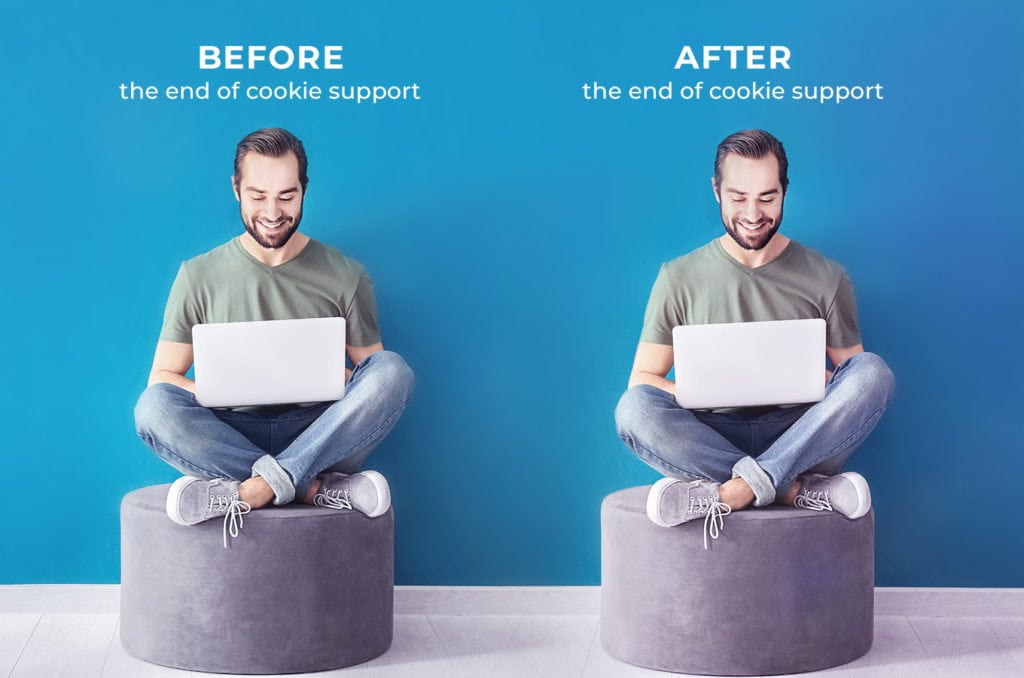
There are too many things at stake to let things go wrong.
The whole Internet relies on ads to provide users with free content. Users get stuff without paying, websites earn money, advertisers can show relevant products to people visiting pages, and cookie-based tracking enables just that.
So, there are already several approaches in development that aim to ensure that advertisers can continue to do their business effectively and benefit from cross-device tracking while user privacy is protected. In other words, companies like Google try to have their metaphorical cookie and eat it at the same time.
They keep testing new solutions under a banner called ‘Privacy sandbox’. There is still no clear replacement for cookie-based technologies from Google.
Voluum is an ad tracker with the main purpose of enabling advertisers to increase the performance of their ads. It doesn’t profile users, it doesn’t track their movements on websites that are outside the campaign funnel.
Voluum uses two methods of recording visitor-generated data.
- Direct method (recommended). This method uses scripts that ping Voluum with campaign info on page load.
- Redirect method. This method performs a millisecond-fast redirect of a visitor through Voluum servers to record visit information. Voluum uses cookies as a backup solution only (used when referrer data is lost).
For tracking conversions with a conversion tracking pixel (usually used for your own offers), cookies are necessary. Postbacks (used by third-party offer providers such as affiliate networks) do not require cookies to work.
The outtake from the previous part is:
The problem is not with cookies themselves but rather with third-party cookies. They are in the crosshairs of the industry leaders. First party cookies will not be blocked, even in the distant future, as such a move would simply break the Internet as we know it.

Knowing this, it is better to start talking about cookie-safe tracking and analytics, rather than cookieless tracking. Cookies are useful and are the main way of storing user data when they are jumping between pages (with local storage as backup). You still need reliable tracking. Just make sure that it is cookie-safe tracking.
Cookie-safe tracking
Fortunately, Voluum can track via first-party cookies only. With a direct method of tracking by default, and with a redirect method after a quick setup.
- First-party cookie funnel with a direct method
The tracking scripts that Voluum uses (a lander tracking script and offer tracking script) have been designed to set two cookies: one in the domain that you use for tracking (each Voluum user gets one for free), and the other in a domain of a landing page. It also saves data in local storage.
This mechanism ensures that no data is lost, no matter the setup.
Moreover, you can put this script on your landing page and on another page that has click URLs on them, and even put several subpages in-between, and this whole visitor journey will be counted in the context of this original visit.
If you are an offer owner, you will also appreciate the fact that if you put a landing tracking script on a lander, offer tracking script on an offer page, and a conversion tracking script on a ‘Thank You’ page (a page that is loaded directly after a conversion), you will be able to track conversions with first-party cookies.
Here’s an example scenario:

- First party cookie funnel with a redirect method
Although a direct method of tracking is recommended as more reliable (and compliant with big platforms like Google), there are also some arguments to using the redirect method.
First, it is much faster and easier to implement. It does not require editing a landing or offer page’s code.
Second, it allows for various alterations of a campaign funnel, namely: rule-based paths or AI-powered A/B testing.
To connect Voluum analytics to your campaign with peace of mind, set up your campaign in a way that will force web browsers to treat Voluum cookies as first party ones. Note that cookies are used only as a backup with this method.
The solution is simple:
You have to use the same domain for tracking and for your pages.
here’s how to do that:
- Grab a custom domain from a domain provider, for example, ‘xyz.com’.
- Create a subdomain for tracking, for example ‘track.xyz.com’.
- Create a CNAME record for this subdomain that points to Voluum dedicated domain.
- Add the tracking subdomain to Voluum as a custom domain.
- Use your ‘xyz.com’ domain for your landing page (if you use one), or offer page (if you don’t use a landing page), and for the ‘Thank You’ page (if you track conversions using conversion tracking pixel).
- Use your tracking domain in all tracking URLs: campaign URL, click URL, and use it with a conversion tracking pixel.
Here’s an example of a funnel with a lander and an offer:
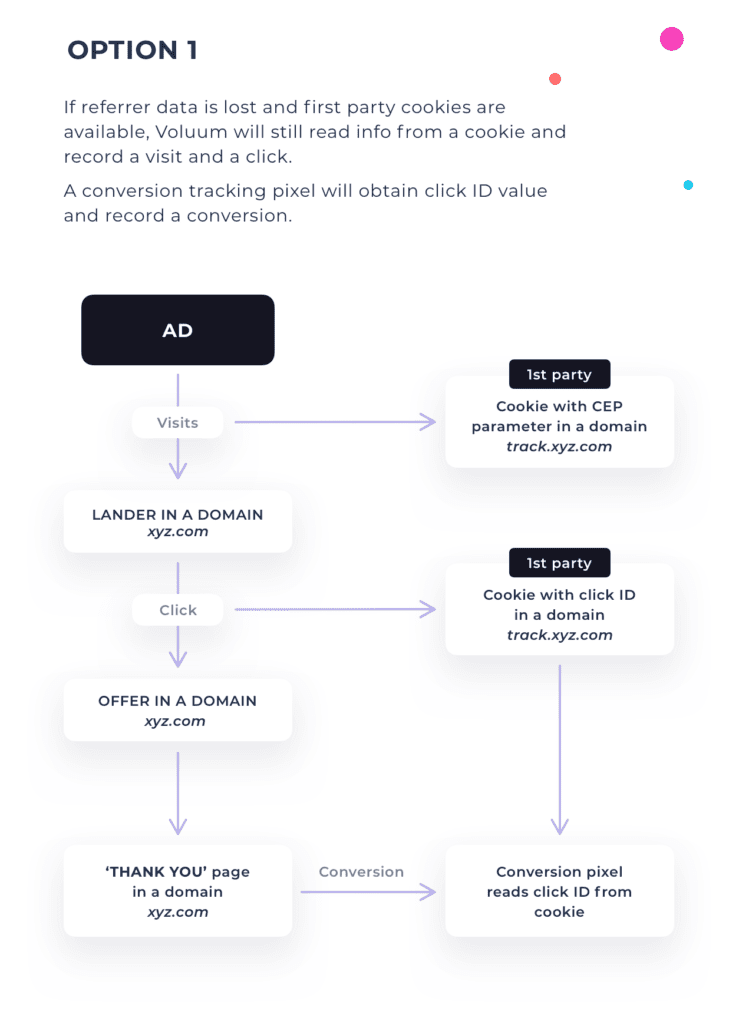
Here’s an example of a campaign funnel with only an offer:
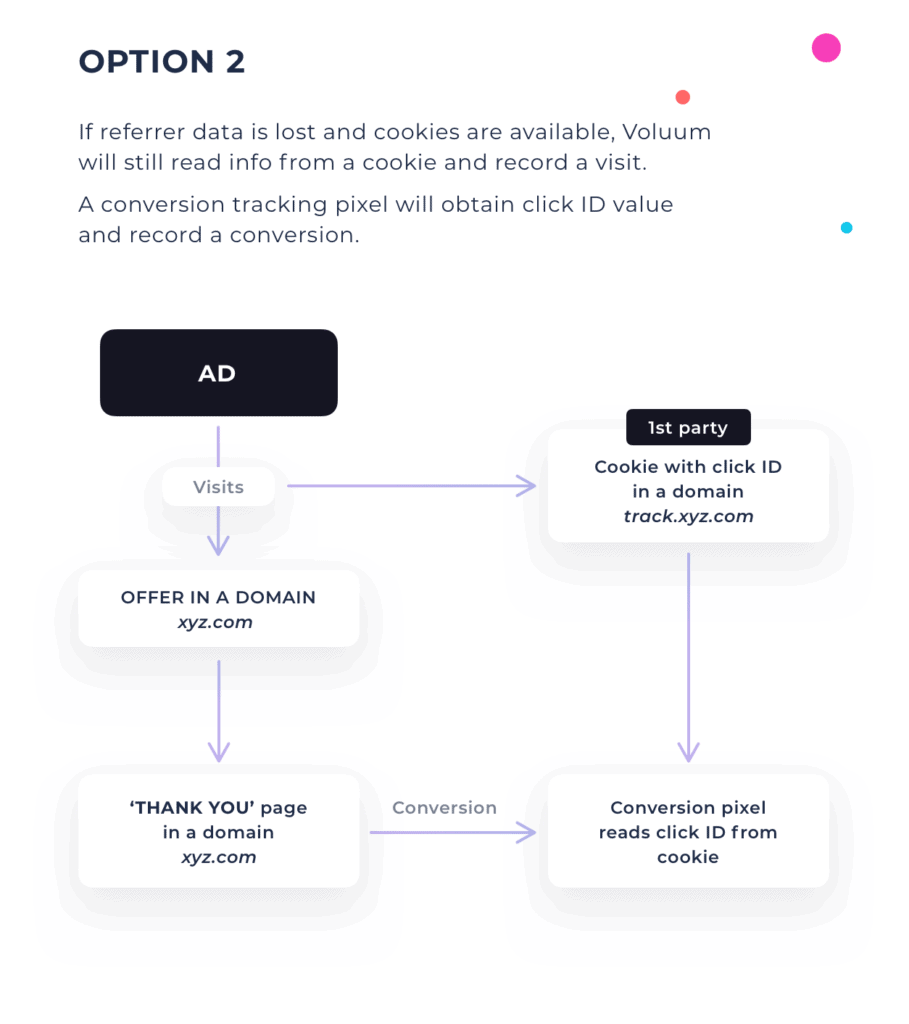
Cookieless tracking of conversions a.k.a. Cookieless conversion attribution
Conversion attribution requires conversion information to be passed from an offer to Voluum and connected with appropriate visit data.
Advertisers can choose:
- For their own offers – A conversion tracking pixel that can use first-party cookies set by an offer tracking script.
- For third-party offers – A postback that can immediately report conversions to Voluum. Postbacks are supported by the majority of affiliate networks and they are known for their reliability.
API integration
Additionally, Voluum is integrated with selected partner affiliate networks and can receive conversion information via API. This is the deepest and most reliable type of integration that users can utilize to track offers from the following networks:
- ClickBank
- Clickdealer
Analogically to postbacks, API integration does not use cookies.
Passing conversion info to Facebook
The extension to the postbacks feature is an option to pass those conversions to Facebook.
People that don’t use Facebook for advertising may not be impressed, after all, the traffic source postback URL feature has been around for years. But if you have dealt with Facebook you would know that Facebook accepts conversions only from domains where ownership has been verified.
That’s a problem for marketers that use 3rd party offers.
Luckily Voluum has a solution for this. This solution allows you to verify any domain that you have control over in Facebook and then use it to generate postbacks and send them with conversion info. This allows you to still use Facebook reporting and conversion optimization features that you normally wouldn’t have access to.
Part 3: Mixing various tracking methods
You can use both tracking methods in different parts of the same campaign funnel. To fully understand how such funnels would work, here’s a list of all possible tracking scenarios:
Scenario 1: Ad -> Offer with a direct method
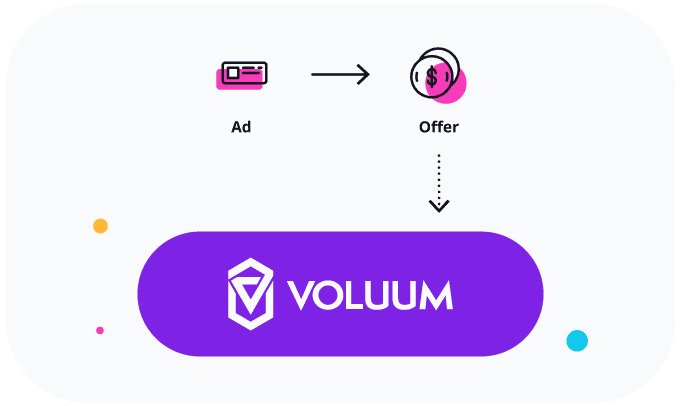
This simple campaign funnel requires you to put an offer tracking script on an offer page. Then you have to submit a direct destination link to your traffic source and users will be taken from an ad directly to an offer without the initial redirect.
This of course means that you have to be able to edit the offer page, so this scenario is for offer owners only. If you cannot edit this page (as is often the case with offers from affiliate networks), go with scenario 2 and use the standard redirect method. But if you still want the first transition to be direct, please go to scenario 3 or 6.
The direct method of tracking will save a cookie in a domain of an offer, so it will be treated as first-party.
Scenario 2: Ad -> Offer with a redirect method
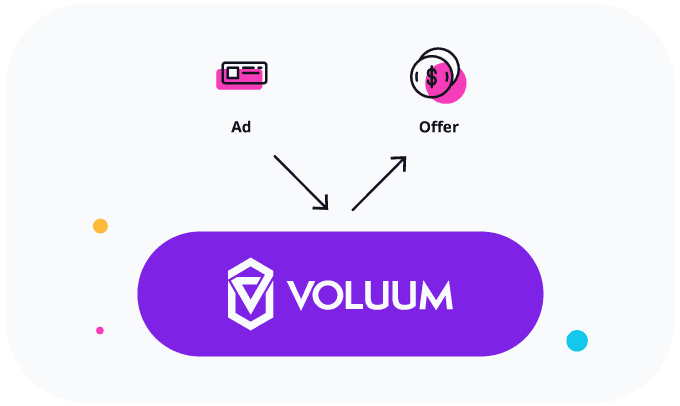
This basic campaign funnel will work just fine in most cases without any cookie support. Cookies are only used as backup. After activating the campaign URL that is hidden behind an ad, Voluum will count a visit and direct a visitor to the offer page.
If you use the same domain for tracking and and offer, you will have a truly cookie-safe setup, as it will useon first-party cookies only.
Scenario 3: Ad -> Landing page with a direct method and Landing page -> Offer also with a direct method
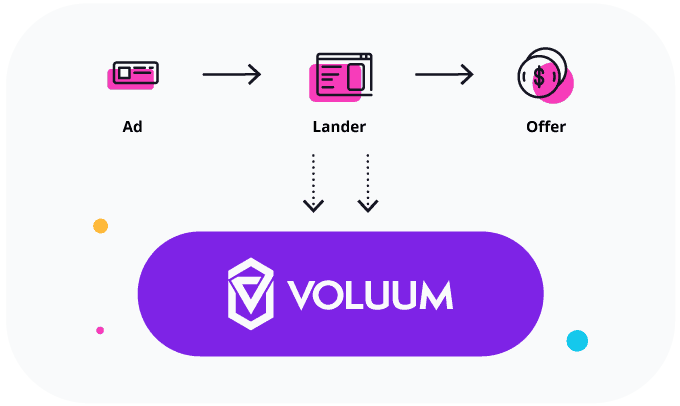
This scenario requires:
- Submitting a lander tracking script to your traffic source platform
- Putting a lander tracking script on a lander.
- Implementing a click URL on a landing page.
The direct tracking script will count both a visit (arrival to a landing page) and a click (leaving a landing page after clicking a click URL). This setup works with a single click URL or with multi-offer click URLs.
When a lander loads, the script will replace a click URL with a direct offer URL. This enables you to use paths and weights for offers even with the direct method of tracking.
You don’t need to put any script on an offer page in this scenario, unless you want to track conversions with a conversion pixel, with conversions occurring on an offer page load. Read the Set up conversion tracking section of this guide.
Tip: Our lander verification tool will automatically check if you have correctly implemented a direct script for landers on a landing page.

What will not work are: any forms of lander and offer rotations, rule-based paths, path weights and Voluum AI.
If you want to track conversions using a conversion tracking pixel, put an Offer tracking script on an offer page and pass a click ID in an offer URL using any parameter name.
Scenario 4: Ad -> Landing page with a redirect method and Landing page -> Offer also with a redirect method
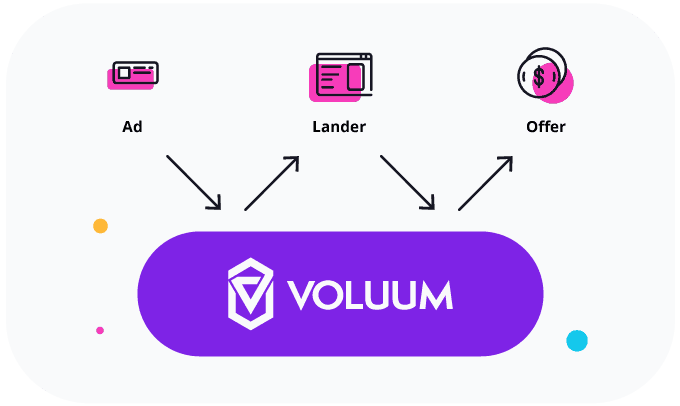
Without the support of 3rd party cookies and no further adjustments, this funnel may encounter problems. You should use the same domain for tracking and for your lander to be on the safe side.
This will keep your data reliable and consistent, while at the same time it will allow you to benefit from the advantages of a redirect method of tracking: rotations, paths and AI.
Scenario 5: Ad -> Landing page with a redirect method and Landing page -> Offer with a direct method
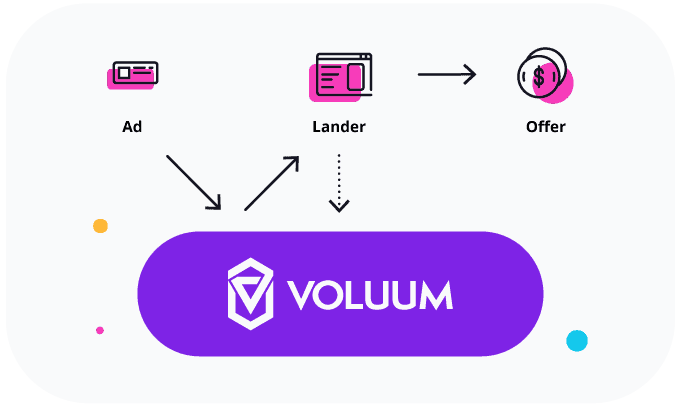
You can use different tracking methods on various steps of the campaign funnel. With this scenario you still benefit from various forms of altering paths to landers (by rules, weights or AI), while reducing the time needed to go from a lander to an offer.
You are still required to put a lander script on a lander to fetch a click URL and count a click.
Scenario 6: Ad -> Landing page with a direct method and Landing page -> Offer with a redirect method
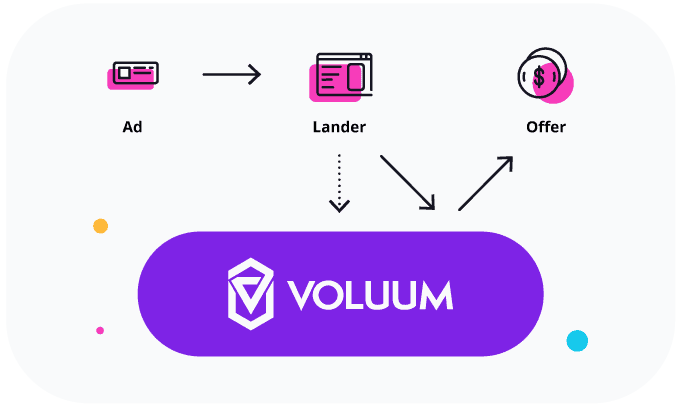
This type of a campaign funnel allows you to be compliant with the requirements of many traffic sources, as well as use various techniques of hiding referrer data, such as meta-refresh and double meta refresh.
But you can go with a simple redirect for the second step of your campaign funnel. The lander tracking script is still required though.
Scenario 7: Organic traffic
With a direct tracking script for landers obligatory, organic tracking will be easier to set up.
Add a traffic source in Voluum named ‘Organic traffic’ and put the lander tracking script from a campaign with this traffic source on your lander.
Voluum Is focused on Keeping your Analytics Working
The people behind Voluum analytics have their fingers on the pulse of the industry. They monitor the situation and plan ahead to have their product always ready and working for its customers.
We have to be ahead of things because we simply cannot afford not to be.
Any past updates to the advertising industry have been announced in advance, giving plenty of time to develop countermeasures. If you stick with Voluum we can guarantee that you will always have a futureproof product. Cookieless tracking is just an example.


